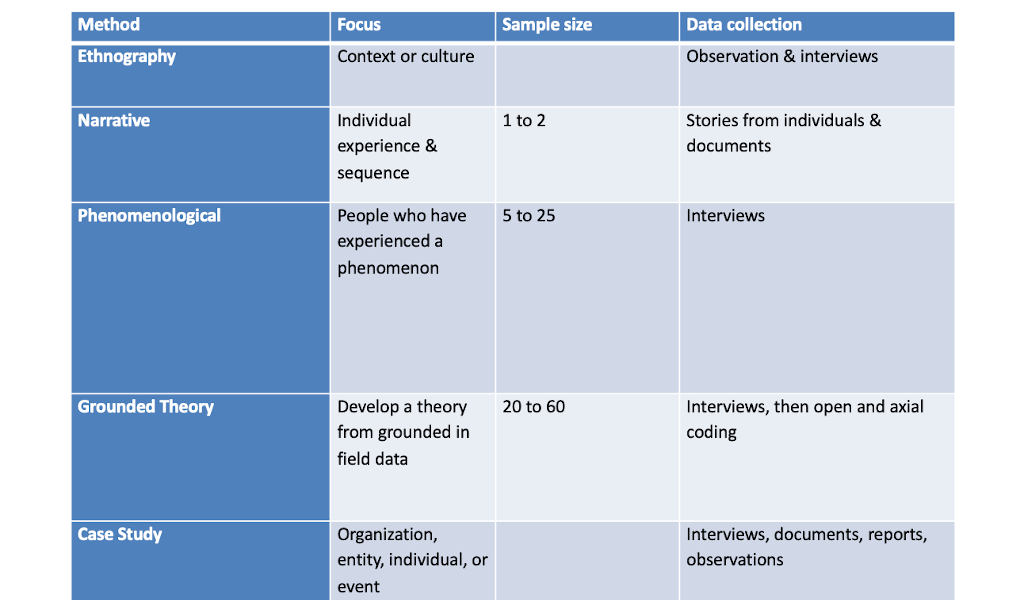
“Startups that regularly conduct qualitative research (not just quantitative) experience faster results in their quest to achieve product-market-fit.” – Mitchell Posada, I’m a startup, do I need to do Qualitative Research?
Why?
Because by regularly doing qualitative research, you are engaging with (and acting on) the voice of your ideal customer. To the point where the customer actually becomes a part of everything you do.
Whether you’re a founder about to launch a product or someone who is simply keen to understand and put into practice qualitative research methods – you’re in the right place.
Just keep on scrolling and I assure you that on finishing this Process Street blog you will be well versed in all that is qualitative research.
Alternatively, to skip to a specific section of the post click the links below:
- What is qualitative research?
- A closer look at qualitative research
- Types of qualitative research
- Qualitative research in practice: The chocolate method
- Is qualitative research for you?
Keep reading to find out exactly what chocolate has to do with qualitative research!
What is qualitative research?
Qualitative research is based on finding a solution to a particular problem. There are various types of qualitative research and various methods for collecting qualitative data. All of which will be covered in this post.
But first, let’s first clarify what qualitative data actually is.
The two main approaches of data collection are qualitative and quantitative research.
Qualitative research is a way to gain a deeper understanding of whatever it is you are researching. It gives you an understanding of events, data about human/ social groups, and broad patterns behind the phenomenon that you are researching.
The elementary method of conducting research was quantitative, which in other words means statistical/numerical research. But recently, qualitative methods have become increasingly popular amongst an array of academic and scientific fields (more on this later).
Why?
Well, there’s a heap of reasons; many of which align with the advantages qualitative data can have for a given study or project. Let’s take a closer look at some of these advantages:
- Qualitative research is useful for finding out more about complex situations.
- Qualitative research allows for a humanistic and insider viewpoint to be included in research.
- The qualitative data collected is based upon the participant’s world view, rather than a world view created by a researcher.
- Qualitative data can be used to interpret how people interact with constructs like IQ or fear (both of which are hard to quantify).
- The focus of the qualitative research study can be adapted mid-way through if necessary. In a traditional lab setting, this would usually null-and-void the entire experiment. ❌
- Qualitative data can support and back up quantitative data by creating an important case which can vividly paint a picture for the overall study.
Quantitative vs qualitative research
The key point here is that qualitative research generates non-numerical data.
Quantitative data is used when a researcher is trying to quantify a problem, or address the “what” or “how many” components of a research question. It is data that can either be counted or compared on a numeric scale.
Quantitative data is usually gathered using surveys (amongst other methods) and statistical analysis software (like SPSS), is often used to analyze it.
For example: The number of people who subscribe to Process Street’s blog would be quantitative data. As would the number of ratings (on a scale of 1-4) of the quality of Process Street’s customer service support.
Qualitative data describes qualities or characteristics. It tends to be collected using questionnaires, interviews, observations. The qualitative data could be in the form of descriptive words that can be examined for patterns or meanings – sometimes through the use of coding.
Coding allows the researcher to categorize qualitative data to identify themes that correspond with the research questions and to perform quantitative analysis. However, coding is not a necessity in qualitative research.
For example: A qualitative research study could be a recording of a Process Street webinar where we ask our users for their feedback on the product.
In summary: Quantitative research is statistical – it has numbers attached to it, like averages, percentages, or quotas. Whereas qualitative research uses non-statistical methods.
I’ll clarify with one final example:
Let’s say you perform a study and find that 50% of a school’s students dislike chocolate. The quantity – 50% – makes it quantitative research. A follow-up qualitative research study could interview a small percentage of those students to find out – why – they do or do not like chocolate.
Unlike the numeric form of the quantitative results (50%) the answers of the qualitative study are free-form (this could be narrative or it could be a voice/ film recording) and don’t have numbers associated with them, so that makes them qualitative.
A closer look at qualitative research
The point of qualitative research is to understand a research query in a humanistic or idealistic manner.
Although, in technical terms, the quantitative approach is seen to be a more reliable method as it is based upon numeric methods, qualitative research methods are used to understand people’s beliefs, experiences, attitudes, behavior, and interactions which are equally valuable. And, the two methods used in conjunction with each other gives the most value.
As I stated earlier in this post, qualitative methods are becoming increasingly popular in an array of academic and scientific fields. Let’s take a closer look at the reasons for this…
Despite once being viewed as a hindrance to experimental research, qualitative research is now recognized for its ability to add a new dimension to studies that cannot be obtained through statistical measurements alone.
Qualitative research was initially used in psychological studies because it was hard for researchers to evaluate human behavior in a numerical fashion .
Since then, qualitative research has slowly been integrated into other research fields, such as:
- Clinical research : Qualitative research has been used in observational studies, interview studies, and documentary/textual analysis of various written records. The research helps the participants to share their experiences of the effects of the drug of interest.
- Health research ⚕️: In clinical trials, qualitative research can have a profound impact on data collection and the interpretation of results. When combined with quantitative data a qualitative study can provide a better understanding of a patient’s health-related issues.
Types of qualitative research
Hopefully, by now, you should have a solid and clear understanding of what qualitative research is. Along with a grasp on the differences between quantitative and qualitative research, and the areas in which qualitative research is being used.
Now let’s take a look at the main types of qualitative research.
*Disclaimer: This is not a complete list of all the types of qualitative research out there, but rather an introduction to the most commonly cited types. Please use the comment section of this blog post to identify any other useful types you can think of.
Ethnographic qualitative research
- Purpose: To describe characteristics.
- Outcome: To provide a description.
Ethnographic research is likely the most popular and applicable type of qualitative research. In ethnography, you engage yourself in the participants’ environment to understand things like the behavior, culture, challenges, motivations, and themes that may occur in the study.
Ethnography has its roots in cultural anthropology where researchers immerse themselves within a culture. Rather than relying on interviews or surveys, the researcher experiences the study environment first hand.
Narrative/Historical qualitative research ✍
- Purpose: To describe/examine the events of the past and to understand the present moment. This helps to anticipate potential future effects.
- Outcome: To select a means of presentation of the study (i.e. a chronology, issue paper, etc.)
The narrative approach analyzes a sequence of events with one another, usually from just one or two individuals in order to form a cohesive story. Within this method you conduct in-depth interviews, read documents, and look for themes (which can then be used for coding – I touched on this earlier on in the post).
Phenomenological qualitative research
- Purpose: To describe the lived experiences of the participants of the study.
- Outcome: To encounter findings that have been described from the participant’s point-of-view. The researcher identifies themes and a structural explanation of findings is developed.
A phenomenological study is the type of study where you want to describe an event, activity, or phenomenon. In a phenomenological study, you use a combination of methods, such as conducting interviews, reading documents, watching videos, visiting places and events, to understand the meaning of whatever it is you’re studying. The researcher relies on the participants’ own perspectives to provide insight into their motivations.
Grounded theory qualitative research ⛰
- Purpose: To develop a theory development.
- Outcome: To support a theory via examples sourced from data.
I’ve established that a phenomenological study aims to describe the essence of an activity or event. Grounded theory on the other hand looks to provide an explanation or theory behind the events being studied.
Case study qualitative research
- Purpose: To describe in-depth the experience of one person, family, group, community, or institution.
- Outcome: An in-depth description of the experience.
A case study approach involves an in-depth examination of a participant or a single subject (like an institution/organization). The goal of a case study is to provide a complete description of the participant and case.
Because of the focus on the individual participant/subject, case studies often include in-depth interviews, reviews of his/her previous record, and observations. A case study provides an opportunity for intensive analysis of details, which are often overlooked by other methods.
Typically a case study involves gaining an in-depth understanding of multiple types of data sources.
Qualitative research in practice: The chocolate method
In this section, I’ll introduce the various methods of qualitative data collection. I’ll then provide an example of each method in practice by using the chocolate method. A method that I was originally introduced to whilst studying research methods at university (thank you, Mrs. Myers ).
For the chocolate method, the purpose of the study is to identify a group of student’s chocolate preferences and the reasons for them.
Qualitative research method: Convenience Sampling
Convenience Sampling: This is a sampling technique whereby qualitative researchers recruit participants who are easily accessible and convenient to the researchers.
Convenience sampling in practice, the chocolate method:
Pick someone without much thought (e.g. front row of the classroom). Ask the students what they think about chocolate?
Record the data in a narrative fashion, such as on the board or a flipchart. Summarize the data with a word or a phrase such as “love it”; “chocolate is ok, but it isn’t my favorite”; “I’ll eat it”; “chocolate… ew, gross”.
Continue the research by asking another student.
Once you have asked the second student, record the data in the same fashion that you did with the first student (or first participant in technical terms). Record the second student’s response next to the first with another keyword or a tick beside the first keyword if the response is the same.
Keep asking individual students, in a quick-fire (or convenient) way
Loosely group and sort the data from the student’s responses as you place each response on the board (this is illustrating – simply – how you are analyzing the data as you go so you can begin to notice any themes).
After collecting a number of responses look at the data gathered and any themes that appear. Analyze the data by establishing any positive, neutral, and negative responses.
Qualitative research method: Case study
Case studies are a specific type of qualitative research so I already introduced them earlier on in this post.
But, to recap: Case studies are in-depth investigations of a single person, group, event or community. Typically, data are gathered from a variety of sources and by using several different methods (e.g. observations & interviews).
Case study research in practice, the chocolate method:
Start again. Pick one or two students. Sit them on chairs at the front of the classroom and have a longer, more in-depth conversation with them about chocolate. Ask questions like:
When did you first experience it? What does it mean to you? Who introduced you to chocolate?
Explore each individual student’s preferences within the general category of chocolate: Think of all the different types of chocolate, dark, milk, white, nutty, fruity… … and so on.
Qualitative research method: Saturation
Data saturation refers to the point in the research process when no new information is discovered in data analysis. In this situation, the redundancy signals to researchers that data collection may need to cease.
Saturation means that the researcher can be reasonably assured that any further data collection would yield similar results and serve to confirm the already emerging themes and conclusions.
For example, for a researcher to claim that they have collected enough data to achieve the purpose of the study, they would need to report how, when, and to what degree they achieved data saturation.
Saturation research in practice, the chocolate method:
Start again. Ask one of the students where they get their chocolate from.
Record their answers in the same way that you did for the convenience sampling method – on the board, or flipchart (in a narrative fashion). Keep asking each of the students the same question. The likelihood is that their answers will be similar “the supermarket; the corner shop; the gas station..and so on”.
Once you reach the point at which all the students are repeating the same answers and no new data is being uncovered … you have reached the point of data saturation.
Qualitative research method: Quota sampling
Quota sampling in qualitative research is a specific technique for selecting a sample that has been defined using a convienient or purposive sampling strategy to define the categories of data sources that are eligible for a study.
Quota sampling in practice, the chocolate method:
Gather the students. Group together three people who stated that they “love it” (or similar) in the convenience sampling research exercise.
Then group together three students who stated “chocolate is ok, but it isn’t my favorite” (or similar).
Do the same thing for three students who claimed: “I’ll eat it” (or similar).
And, finally, group together three students who stated “chocolate… ew, gross” (or similar).
Assemble the group of students as they are your sample group. The sample group illustrates the balance between predetermined categories of interest within the study of chocolate.
Qualitative research method: Snowball sampling
Snowball sampling is where research participants recruit other participants for a test or study. It is useful to use when potential participants are hard to find. It’s called snowball sampling because (in theory) once you have the snowball rolling, it picks up more “snow” along the way and becomes bigger and bigger. ☃
Snowball sampling, the chocolate method:
Put a numbered list of the student’s names (first names only) on the board.
Then direct your students (the participants) to find other participants by saying something along the lines of:
“I’m working on the sampling for this chocolate study – I’ve already asked you all, so I’ve interviewed XX (number of students in the class) students but I really need YY (a bigger number) students in my sample. Do any of you know anyone else who is a student? Can you put me in touch with them?”
The participating students will give names of the other students they have met who are also students but not in this class. This exercise illustrates the idea of using people within your existing sample to put you in touch with other potential participants who fit your criteria.
The students pick up other students to make the sampling group larger, just like a snowball picks up more snow to make the snowball bigger.
Is qualitative research for you?
So, there we have it.
By now you should feel well versed in all that is qualitative research: the types of qualitative research, when and where qualitative research is used, and the methods for collecting qualitative data.
Most importantly, however, thanks to the chocolate example you should feel ready to put all of this information into practice and start collecting your very own qualitative data.
Whether you choose to use quantitative research alongside qualitative methods is completely up to you and the project at hand. Choosing one method or the other (or both) depends on what you believe would provide the best evidence for your research objectives.
We’d love to hear about the different ways you use qualitative research in the comments. Who knows? You may even get featured in an upcoming article!







 Workflows
Workflows Projects
Projects Data Sets
Data Sets Forms
Forms Pages
Pages Automations
Automations Analytics
Analytics Apps
Apps Integrations
Integrations
 Property management
Property management
 Human resources
Human resources
 Customer management
Customer management
 Information technology
Information technology






Molly Stovold
Hey, I'm Molly, Junior Content Writer at Process Street with a First-Class Honors Degree in Development Studies & Spanish. I love writing so much that I also have my own blog where I write about everything that interests me; from traveling solo to mindful living. Check it out at mollystovold.com.